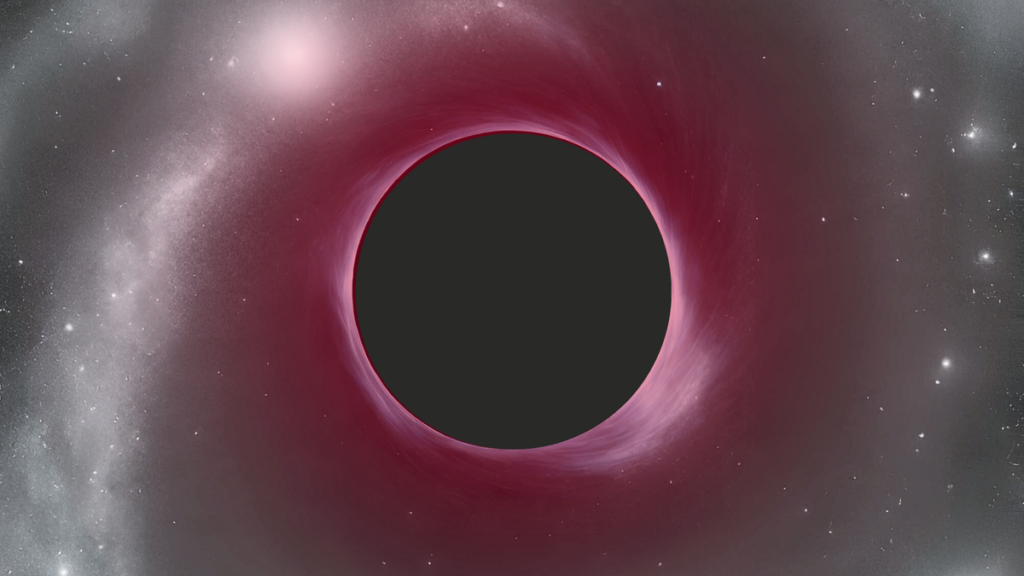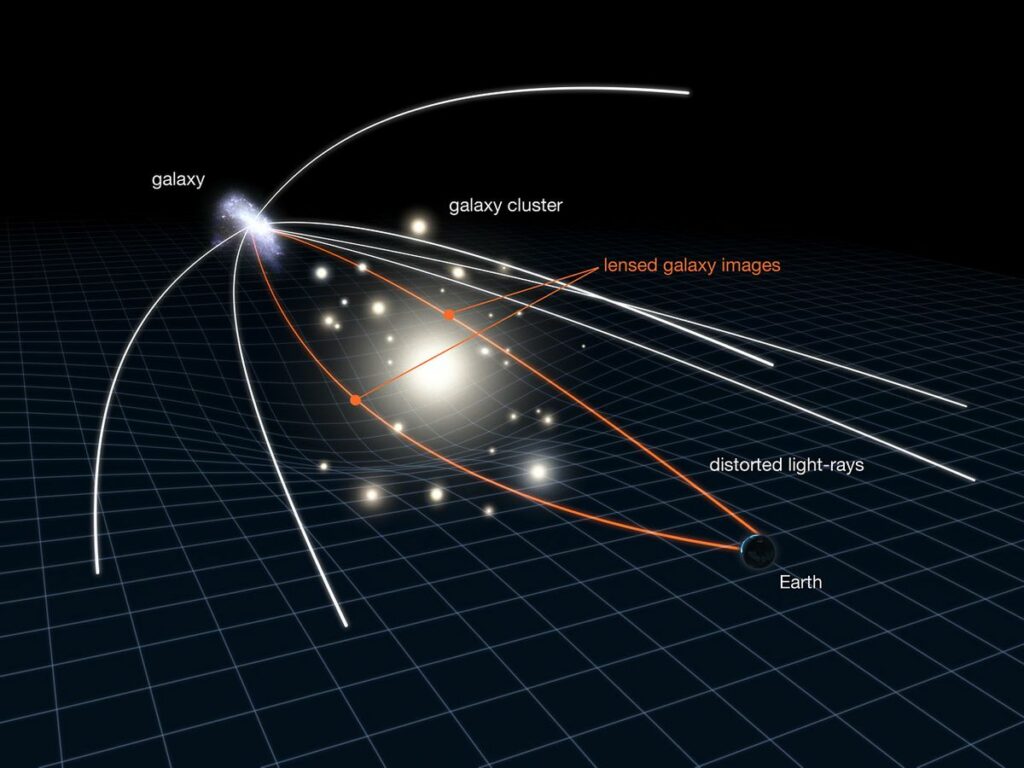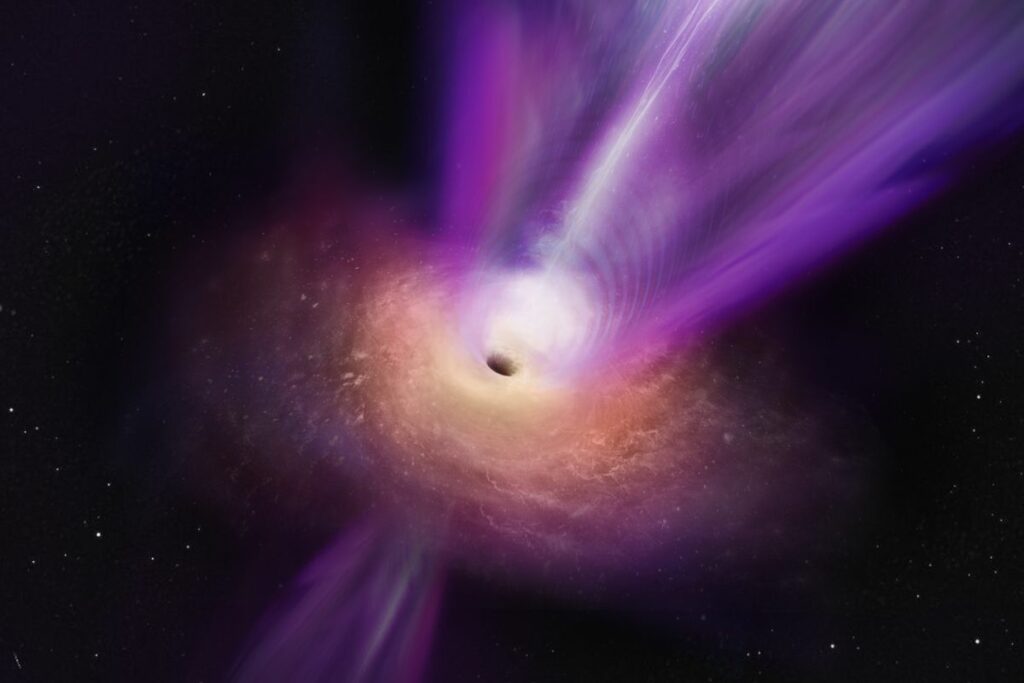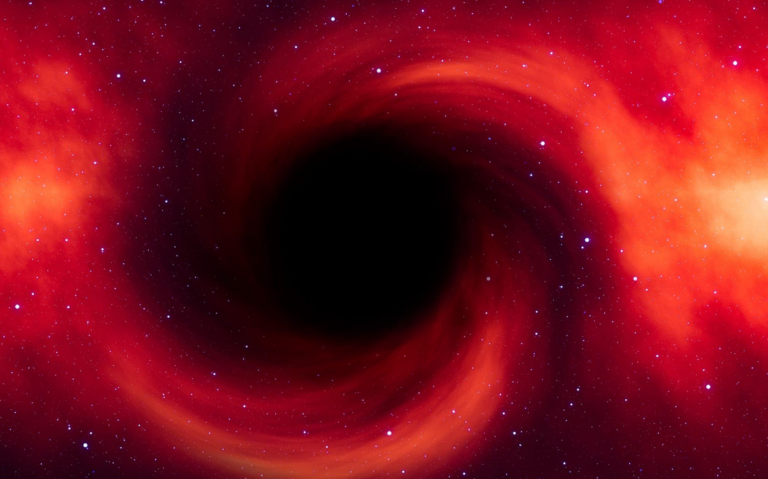The JWST has identified a supermassive black hole that is rapidly growing in the early universe and appears to be extremely red.
Astronomers have empirically observed a massive black hole that seems to be a giant “red dot” in the ashes of the universe and is growing in the dark cosmic regions by using the James Webb Space Telescope (JWST).

The distinctive color of the supermassive black hole is attributed to the fact that the universe is expanding, as was the observation made about 10 months after the Big Bang done. This results in the speculation that the black hole then sits at the center of gas, dust, and universe in which the expanding space is in all directions.
The team of astronumi of Lukas Furtak and Adi Zitrin from Ben-Gurion University of the Negev University of the came out with the mass of the supermassive black hole after analyzing the JWST data. What is amazing about this is that it has only 40 times more mass than our Sun and as a result its mass is huge for its galaxy.
Located approximately 12. The supermassive black hole that spirals at the centre of a galaxy 9 billion light-years away from Earth has been observed to be spewing out the interstellar gas and dust in its surrounding region by scientists. In general, it’s about a process of the universe getting bigger.
After we got the first data from JWST we were very excited. The data for UNCOVER program seemed suspicious, and during our observation we noticed three objects that looked compact yet extremely red in colour and seemed suspicious immediately. “Although we at first thought that the red ellipses could mean that it was quasar-like, more evidence is needed to prove that. “
The ‘three red dots’
The huge amount of material consists of the objects that are the biggest ones like this one that make quasars. The bad hole is slowly fed by this stuff and then the accretion disk built by the gas and dust is formed. Huge gravitational attraction of black hole moves this material there, consequently, the material emits light.
Secondly, any matter that gets out of the outskirts of the supermassive black hole will only be channeled towards the poles of the cosmic giant. In here, the particles are moving into jets and are being continuously focused towards an almost light-speed speed. These luminous light transmissions are widely accompanied by the outbreaks of these jets when these are ejected to the relativistic velocities.
This phenomena indicate why quasars that are operated by the supermassive black holes positioned at the centers of galaxies in an active state (AGN) usually shine so brightly that the total luminosity of collision of all the stars of the nearby galaxy is surpassed by the light generated by the quasars.
Such a supermassive black hole model is represented in JWST data as a tiny dot since the release of a tremendous amount of radiation makes it very bright.
The object did not meet the color criteria of a star-forming galaxy concerted by the grounds of starmaking. For my comment Rachel Bezanson, University of Pittsburgh professor and co-leader at the UNCOVER program, said the following: “And that was consistent with the super-massive black hole hypothesis”. ”
Despite the JWST’s rather powerful infrared abilities, the quasar’s early stage could not be detected without Einstein’s prediction which he made in 1915 in his theory of relativity.
Einstein’s lens
According to Einstein’s general theory of relativity, massive objects bend the spacetime fabric– an interconnected structure consisting of space and time, which are merged into “spacetime”. The curvature which they induce is responsible for the mysterious force called gravity. When the mass of an object as gets bigger, the curvature of spacetime gets more prominent.
In consequence, this curvature impacts the location of planets circular moves around the stars and the centers of galaxies as well as the route being traveled by light coming from those stars. As light gets increasingly closer to a giant, massive object, the more it is drawn.
Thus, an object near the observer, also known as a “lensing object,” can influence the path of light from a distant object after it, causing a displacement in the apparent location of the latter. In certain instances, this phenomenon makes it possible for a background object to be captured more than once even in the same photo. As a result, if the background light is enhanced, the background object turns to be bigger.
It is called “gravitational lensing” when such phenomenon takes place.

In this particular instance the JWST utilized a galaxy cluster dubbed the Abell 2744 to intensify the light emerging from far away galaxies previously too far to witness that would of been. This phenomenon gives the chance to see the drawing of the brilliantly red quasar, which looked like three separated dots of deep red color. “As support for our camera-lensing model, we integrated a numerical algorithm that was developed for the galactic cluster. The red dots which we observed were actually multiple views of the same background object observed from around 700 million years ago,” Zitrin elaborated.

Upon studying this significance in the light source, the light emission was observed to come from a point source.
The light issued by the galaxy is seen in a small area around the circle of the size relating to a current-day star cluster. In the opinion of Jenny Green of Princeton University, the effects of gravitational lenses on the source can be used to generate tight constraints on the overall size. Although every star was stuffed into such a small region, certainly the black hole has at least 1% the system’s mass.
This discovery will create more conflicts in exploring how the existence of supermassive black holes which masses can be up to billions or even millions of thesun, was able to grow up into such a huge size in the early universe.
Apart from these supermassive black holes from the early era, there are many that showcase similar behaviors. Therefore, these black holes and host galaxies have provided new and fascinating insights not only on the growth of black holes but also host galaxies as well as their relationship, which is still poorly understood, as stated by Greene.
The telescope has seen several “red dots” of a rest wavelength with time whose actual source is quasars which are powered by black hole with supermassive mass in the early universe. It has the possibility to bring more light into the obscurity of black hole growth.
Zitrin emphasized this point as the astrophysical version of a chicken -egg puzzle in which one does not know whether the formation of galaxies or black holes occurred first, the size of the black holes also being uncertain, together with their growth.
The team’s research result had been published in the renowned journal Nature.
Do not forget to share your opinion with us to provide you with the best posts !




0 Comments